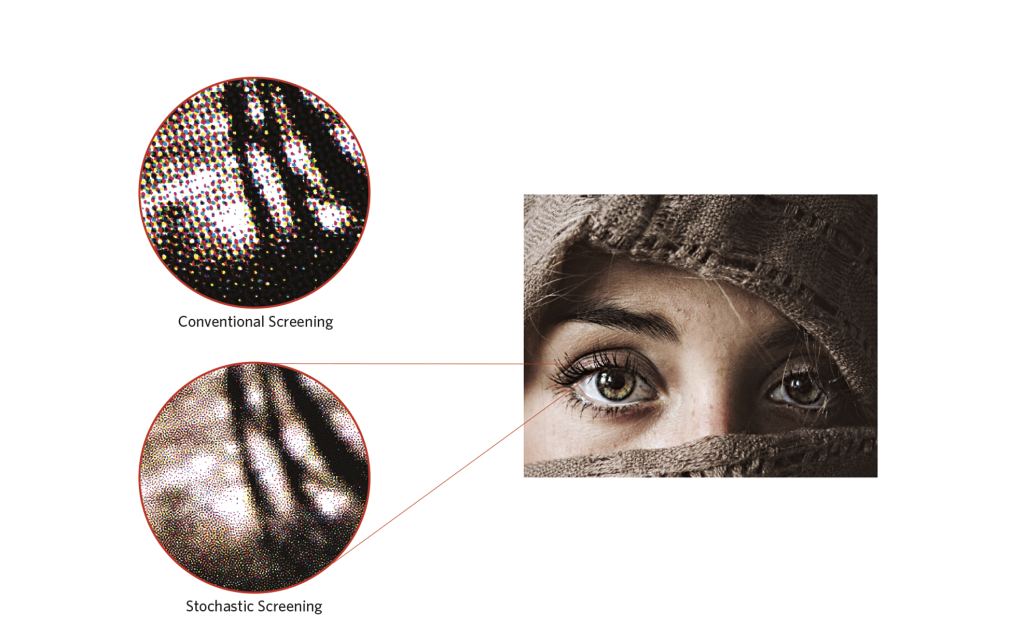When computer-to-plate (CTP) technology was introduced to the printing industry 25 years ago, it allowed the use of higher resolution screening in offset-printed publications. A variety of screening methods enable the imaging of the converted RGB image pixels with dots onto the printing plates. The primary printing colours, CMYK, screened at various dot sizes (Amplitude Modulated [AM] screening) or in different amounts of dots (Frequency Modulated [FM] screening) form the full colour spectrum and tonalities in printed images and vector graphics.
The most common screening method used in the industry today is the conventional AM screening, at a resolution of about 175 lines per inch. Some progressive printers (including Hemlock) have taken advantage of FM screening, most commonly known as stochastic screening. This screening method uses very small dots, randomly placed at differentiating amounts throughout the images and vector graphics at resolutions equivalent to 250 – 480 lines per inch, depending on the micron spot size used.
The major advantage of using stochastic screening over traditional AM screening includes:
- Sharper edge definition in small CMYK tinted typography or in reversed type
- Elimination of moire interferences when printing images with fabric meshes
- Expanded gamut through optical enhancements
- The ability to print with a thicker ink film
- Enhanced stabilization during the high-speed printing process

While stochastic screening requires more attention to colour management and process control in prepress and on press, the end results are far and away more powerful, which is why Hemlock Printers chooses to use it.
Interested in learning more about stochastic screening? Email contact@hemlock.com to get in touch.
ABOUT HEMLOCK PRINTING:
Hemlock Printers is one of the largest and most recognized printers in the Pacific Northwest, operating carbon neutral from our 79,000 square foot production facility in Burnaby, BC, Canada with sales offices in San Francisco and Seattle. Hemlock maintains a commitment to integrity, innovative print technologies and unparalleled quality and service levels.

